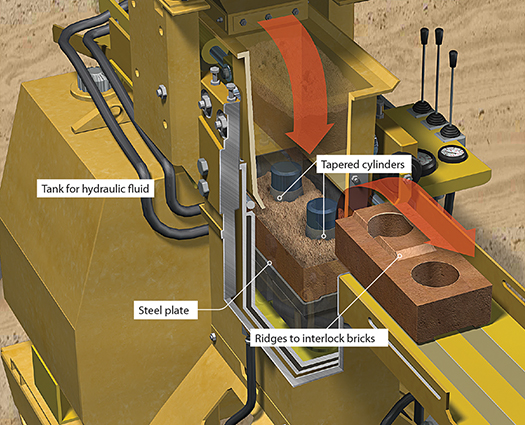


Bricks are fairly easy to make, but in the developing world, traditional fired bricks are sometimes weak and crumble-prone, while cement ones are often unaffordable. The Vermeer BP714 is the first compressed-earth-block machine that makes strong air-dried bricks out of dirt. Its bricks don’t just exceed U.S. cement-code strength requirements—they’re 20 to 30 percent stronger, and cheaper than other machines’ too.
The process is simple. An operator mixes dirt with a bit of water and cement and shovels the concoction into the Vermeer. A portion of the mix moves into a chamber hydraulically pressurized by an integrated diesel engine, where steel plates slam 55,000 pounds of pressure upward to squeeze the dirt into a block. To make the bricks strong and uniform, the machine does something unique: Two cylinders slide into the brick, compressing the dirt even further.
The Vermeer can pound out a 7-by-14-by-4-inch block every 15 seconds. And the bricks are the first that can interlock and accept steel reinforcements for earthquake and hurricane zones.

